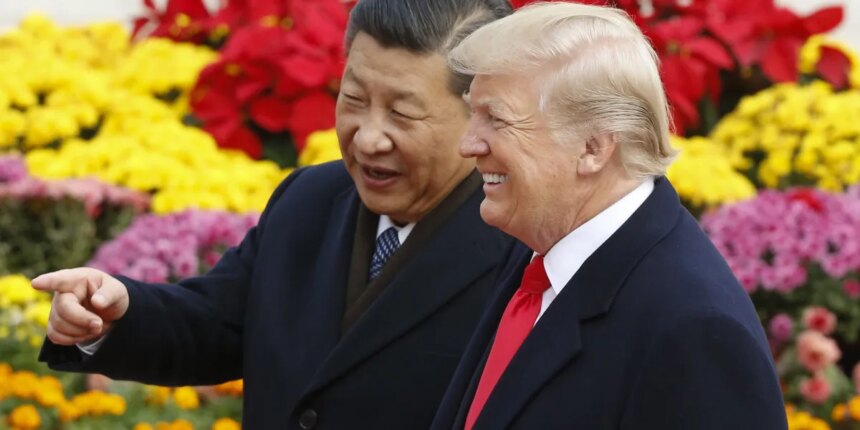Financial markets experienced a significant downturn reminiscent of earlier declines, triggered by President Donald Trump’s announcement of new tariffs and restrictions on trade with China. The President revealed plans for a 100% tariff on Chinese goods and limitations on U.S. software exports, following China’s own restrictions on rare earth exports, a vital component for various technologies.
The S&P 500 index dropped 2.7%, marking its most severe decline since early April. Concurrently, the U.S. dollar index fell nearly 0.7%. This shift came alongside decreasing Treasury yields, while gold prices rose by over 1.5%, indicating a notable reaction among investors seeking refuge amid the escalating trade tensions.
Robin Brooks, a senior fellow at the Brookings Institution, observed that market sentiment appears to suggest that the U.S. is bearing the brunt of the trade conflict with China. He noted on Substack that the power dynamic in the tariff battle seems to be tilting against the U.S., raising doubts about the strength of the dollar, which traditionally has been perceived as a safe haven during market turmoil.
China’s dominance in the rare earth sector—producing over 90% of the world’s processed rare earths and magnets—grants it significant leverage in the current economic standoff. Historically, stock market downturns have led investors to flock to the dollar, but this time, the opposite trend emerged as gold became the preferred asset amidst the turmoil. Brooks pointed out that this divergence was particularly striking, highlighting the dollar’s weakened standing despite being stable in the weeks preceding Trump’s announcement.
Reflecting on the recent market dynamics, Brooks expressed concern over the dollar’s health, noting that it appeared more vulnerable than it had in April. The sharp decline in the dollar, coupled with the substantial drop in stock prices, deviated from typical behavior where a flight to safety would boost the dollar.
Before the recent tariff escalation, progress had been made in U.S.-China trade negotiations, with agreements reached between the U.S. and other key trading partners, including the European Union and Japan. However, underlying tensions persisted, especially regarding rare earth exports, as the U.S. sought to curb other nations’ semiconductor-related exports to China.
This week, the situation escalated further with the introduction of port fees on Chinese vessels by the U.S., prompting reciprocal measures from Beijing. Additionally, China initiated an antitrust investigation against U.S. chipmaker Qualcomm. Compounding these tensions, an announcement from China’s commerce ministry indicated that starting December 1, foreign companies will require a license to export products containing over 0.1% rare earths or utilizing Chinese production technology.
Michael Froman, president of the Council on Foreign Relations and a former U.S. Trade Representative, highlighted the implications of these restrictions, suggesting that while the U.S. can target China’s current technologies, China holds the potential to complicate future advancements in domains such as chip manufacturing and advanced technologies. This escalating conflict signals a critical juncture in U.S.-China relations, with significant ramifications for global trade and economic stability.







